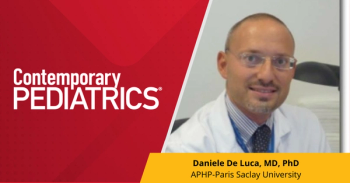
New report guides the treatment of infants with asymptomatic fevers
New guidelines can aid clinicians in diagnosing infants who have fever, but no other symptoms.
New recommendations have been released that aim to guide the diagnosis and management of infants who develop fevers but have no other symptoms.
The
Increasing concern over serious bacterial infections like group B streptococcus in the 1970s led to a spike in hospitalizations and antibiotic use for febrile infants, according to the report. In the decades since, clinicians have attempted to create clinical models to guide treatment of fevers in young children. Focuses in treating symptomatic children with fevers have ranged form ruling out certain serious infections to determining a child’s level of infection risk when creating a treatment plan.
Now is a good time to revisit the guidelines, because newer, more exact testing helps to identify infections more accurately both at birth and throughout infancy. There are also concerns about health care costs and utilization when fevers or infections are misdiagnosed.
There are several challenges to creating guidelines for asymptomatic fever management in young children. Many assessments have focused on determining risk and gauging the “clinical appearance” of the child, but the report reveals that these assessments can vary greatly based on clinician experience.
The group charged with creating the guidance split infants into 3 categories by age range to provide a more tailored recommendation. These are:
- 8 to 21 days old
- 22 to 28 days old
- 29 to 60 days old.
Infants who fell into the following categories are excluded from the recommendations:
- Preterm infants born before 37 weeks gestation
- Infants younger than 2 weeks who were born after complicated pregnancy or delivery
- Febrile infants with suspected herpes simplex virus infections
- Infants with focal bacterial infections like cellulitis or osteomyelitis
- Infants with bronchiolitis or respiratory syncytial virus
- Infants with diagnosed or suspected immunocompromise
- Infants who had surgeries or infections in the neonatal period
- Infants born with congenital or chromosomal abnormalities
- Infants who require life support or life-sustaining treatments
- Infants who were recently immunized (within the last 48 hours)
For the purposes of the guidelines, asymptomatic fever was defined as children who are “well appearing” but have a rectal temperature above 38 degrees Celsius or 100.4 degrees Fahrenheit.
The final recommendations were made based on age for infants who did not meet any exclusion criteria.
Infants aged 8 to 21 days
- Obtain a urine specimen by catheterization for a urinalysis and possibly a urine culture
- Obtain blood cultures
- Obtain a sample of cerebrospinal fluid (CSF) for infants at high risk of herpes simplex virus
- Check inflammatory markers
- Begin parenteral antibiotic therapy
- Monitor infants closely in hospital while awaiting cultures
Infants aged 22 to 28 days
- Obtain a urine specimen by catheterization for a urinalysis and possibly a urine culture
- Obtain blood cultures
- Obtain a sample of CSF for infants at high risk of herpes simplex virus
- Check inflammatory markers
- Begin parenteral antibiotic therapy until cultures are clear for 24 to 36 hours
- Consider hospitalization while awaiting cultures
- Home care may be appropriate when urine, blood, and CSF cultures are negative
Infants aged 29 to 60 days
- Obtain a urine specimen by catheterization or other clean collection method for a urinalysis and possibly a urine culture
- Obtain blood cultures
- Obtain a sample of CSF for infants at high risk of herpes simplex virus
- Check inflammatory markers
- Begin parenteral antibiotic therapy until cultures are clear for 24 to 36 hours
- Consider hospitalization while awaiting cultures
- Home care may be appropriate when urine, blood, and CSF cultures are negative
There are some specific exclusions and other considerations in each of these recommendations, and the committee that crafted the guidelines suggested that further investigation be done with more exact clinical studies rather than retrospective data-driven research. Some topics that could be explored include how long to continue antibiotic therapy and when to re-check cultures, as well as long-term concerns with antimicrobial use or lack thereof. The research team also suggests that future research focus on specific bacterial infections rather than using the general “severe bacterial infection” category.
Reference
1. Pantell R, Roberts K, Adams W, et al. Evaluation and Management of well-appearing febrile infants 8 to 60 days old. Pediatrics. 2021;148(2):e2021052228. doi:10.1542/peds.2021-052228
Newsletter
Access practical, evidence-based guidance to support better care for our youngest patients. Join our email list for the latest clinical updates.








